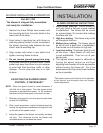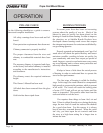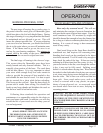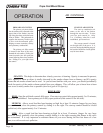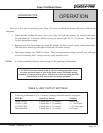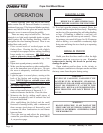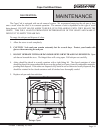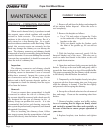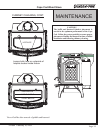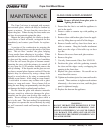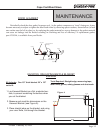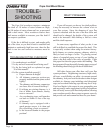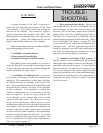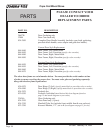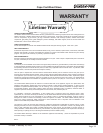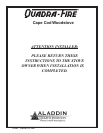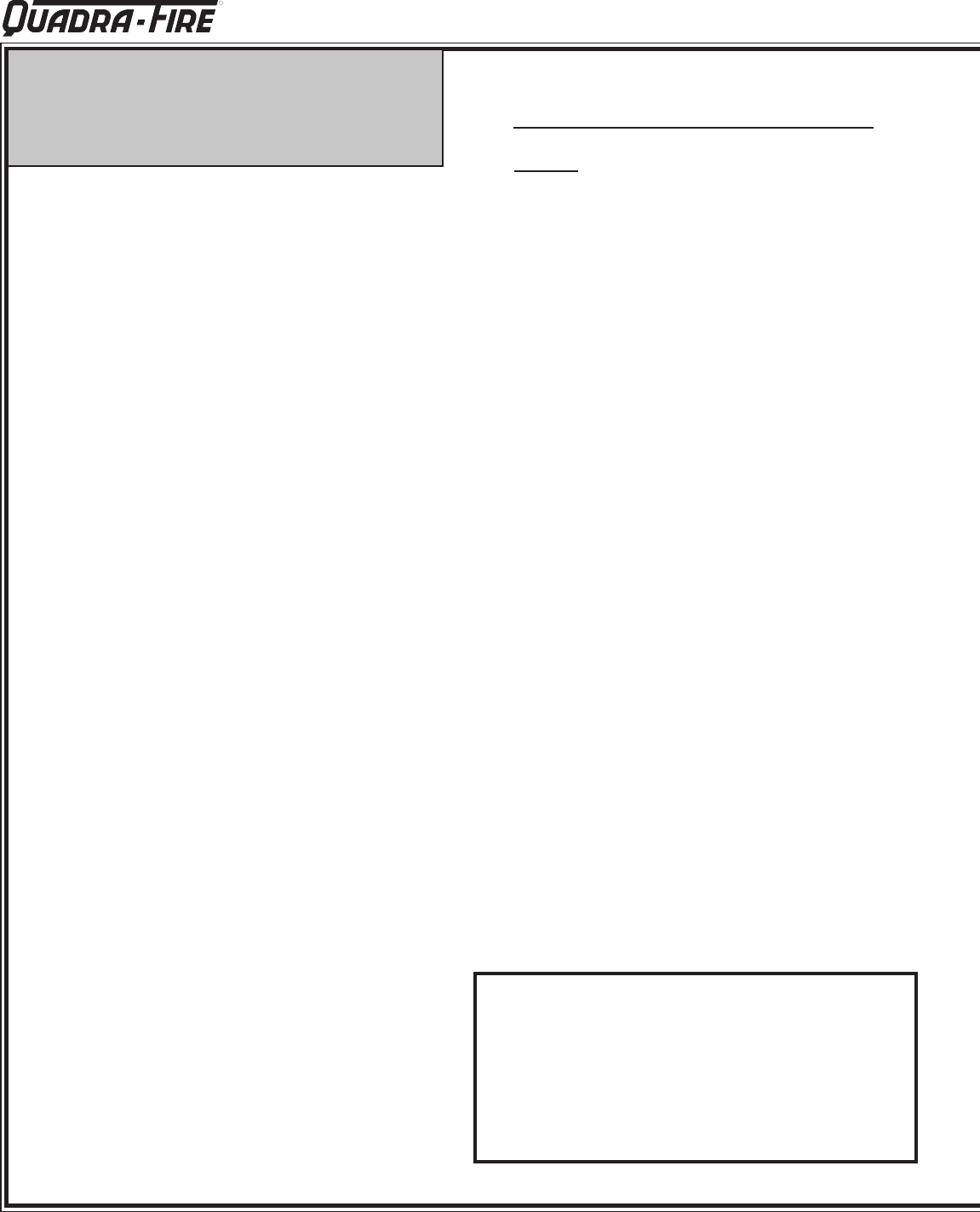
Page 34
32198A February 15, 2002 32198A February 15, 2002
Cape Cod Wood Stove
R
NOTE: Remove all labels from glass prior to
lighting the rst re.
GLASS CARE & REPLACEMENT
1. Ensure that the re is out and the appliance is
cool to the touch.
2. Protect a table or counter top with padding or
cardboard.
3. Remove door with broken glass from the appli-
ance by lifting door up and off of the hinges.
4. Remove handle and lay door face down on a
table or counter. Hang the handle attachment
knob over the edge of the table top so door
lays at.
5. Remove the screws from each glass retainer.
6. Remove the glass.
7. Use only 5mm ceramic Glass, Part 834-3930
8. Position the glass with the gasketing towards
the door and the edges evenly overlapping the
opening in the front door.
9. Replace the glass retainers. Be careful not to
cross thread the screws.
10. Tighten each retainer just a few turns until each is
secured. Then continue to tighten each retainer
alternately, a few turns at a time, until the glass
panel is tightened snugly.
11. Replace the door on the appliance.
The Cape Cod stove is equipped with ceramic,
heat-resistant glass, which can only be broken by
impact or misuse. Do not slam the stove door or
impact the glass. When closing the door, make sure
that logs do not protrude against the glass.
Inspect the glass regularly for cracks or breaks.
If you detect a crack or break, extinguish the re
immediately and contact your Dealer for replace-
ment.
A portion of the combustion air entering the
rebox is deected down over the inside of the door
glass. This air flow “washes” the glass, helping
to keep smoke from adhering to its surface. When
operated at a low burn rate, less air will be owing over
the glass and the smokey, relatively cool condition
of a low re will cause the glass to become coated.
Operating the stove with the primary air control all
the way open for 15-20 minutes should remove the
built up coating. If the deposits on the glass are not
very heavy, normal glass cleaners work well. Heavier
deposits may be removed by using a damp cloth
dipped in wood ashes or by using a commercially
available oven cleaner. After using an oven cleaner,
it is advisable to remove any residue with a glass
cleaner, or soap and water. Oven cleaner left on
during the next ring can permanently stain the glass
and damage the nish on plated metal surfaces.
Do not clean the glass with abrasive materials
that may scratch or otherwise damage the glass.
Scratches on the glass can develop into cracks or
breaks. Never attempt to clean the glass while a
re is in the unit. The best method for maintaining
clean glass is to operate the stove efciently by using
dry well seasoned wood and burning moderate to
hot res.
WARNING !
DO NOT OPERATE THE WOODSTOVE IF THE
DOOR GLASS IS BROKEN OR MISSING. DAN-
GEROUS OVERFIRING CAN OCCUR WHICH
CAN DAMAGE THE APPLIANCE OR IGNITE
CREOSOTE IN THE CHIMNEY, POSSIBLY CAUS-
ING A HOUSE FIRE.
MAINTENANCE



